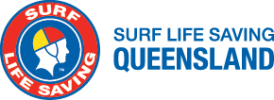The following points shall be adhered to during the operation for Rescue Water Craft (RWC) operations:
- When operating an RWC at all times the operator must wear appropriate approved PPE at all times, including a red SLSA approved helmet, neoprene shorts or wetsuit (not patrol shorts), SLSA approved hi-viz long-sleeved yellow rash-top or patrol uniform shirt, red and yellow approved Type 50 PFD (AS4758) with reflective tape with radio harness and in the harness an operational radio inside an SLSQ approved waterproof pouch tuned to the relevant Surfcom channel.
- RWC Operators shall comply with the MSQ Safety Management Systems, SLSQ Powercraft Code of Conduct, the relevant local government by-laws/standard operations manual, SLSQ & SLSA policies, procedures and guidelines relating to Powercraft and any club specific rules and requirements.
- Only use SLSA endorsed RWC’s that are registered with the Queensland Department of Transport.
- RWC operators must maintain a speed no greater than 6 knots if within 60 metres of swimmers/surfers unless in an emergency.
- It is recommended that each club appoint either a Powercraft Officer to be responsible for all Powercraft, or a separate RWC officer to the existing IRB Officer. Position descriptions and requirements for these roles are determined by individual Clubs according to their Constitution and By-Laws.
- Operations are restricted to the areas defined in Patrol Service Agreements for IRB operations. Operations outside the areas defined in Patrol Service Agreements shall be specifically tasked by Surfcom or Duty Officers via and with the approval of the club-based Patrol Captain of the day.
- Patrol RWC’s are to be used in conjunction or as an alternative to IRB operations, for example, for routine roving patrol purposes and for emergency purposes within the defined areas. Patrols can choose to use the RWC in place of an IRB, but the recommendation is to have both RWC & IRB stationed on the beach in the appropriate Powercraft Launch area. In any case where the RWC is used, the back-up Powercraft can be an IRB or RWC and therefore appropriately qualified operators must be in attendance on patrols at all times.
- The RWC shall be stationed on its trailer on the beach with the signposted Powercraft Launch Area. The RWC operator shall supervise launching and retrieval procedures. It is the club’s responsibility to induct patrolling members into launch/retrieval procedures appropriate to their beach conditions and facilities.
- The RWC operator is not permitted to allow a non-accredited RWC award holder onto the sled or body of the RWC, unless a crew person is required to be carried for the purpose of attending an incident or performing a rescue. That member needs to be positioned on the sled and wearing an approved helmet and PFD.
- All RWC operators must carry out the pre and post operational inspections/checks and record in the logbook. If maintenance issues or damages arise, no matter how small, it is to be immediately reported to the club Powercraft Officer or the other relevant club officer.
- RWC operators are to refuel as per club specific procedures but must never conduct refuelling on the beach.
- Club RWC operators shall complete their annual skills maintenance requirements at scheduled RWC Skills Maintenance sessions.
Note: RWC courses are SLSQ awards and are coordinated by SLSQ Education staff in the Branches. SLSQ assets may be requested and used to support these courses subject to operational constraints



Post your comment on this topic.